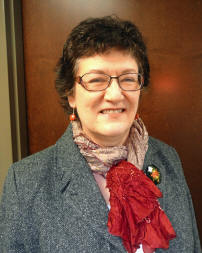 Spring is late this year and many gardening chores that we normally start in March may have to wait until April. However, don't worry about it. Nature has a way of catching up. And, with the wet winter we have had, we can anticipate a glorious
gardening season this year.
Spring is late this year and many gardening chores that we normally start in March may have to wait until April. However, don't worry about it. Nature has a way of catching up. And, with the wet winter we have had, we can anticipate a glorious
gardening season this year.
The first thing I must say, is don't rush things. You will do more harm than good if you try to walk on soggy lawns and gardens, or turn over soil that is too wet. You will compact the soil and destroy its texture. Instead of sloshing around out
there, take this time to do some planning and preparation. Decide upon the plan of your vegetable garden, and decide what new plants you will add to your ornamental garden. Check all of your tools and your lawn mower. If you did not do it in the fall, clean your tools and
have them sharpened. Clean and tune up your lawn mower, and sharpen the blades. If it is not too wet, begin turning your compost piles.
Once your yard has dried up, you can prune shrubs and trees that need attention, except those that bloom in the spring. Spring-blooming shrubs should be pruned right after they bloom. You should also start to clean your garden of debris. Remove
leaves, trash and any extra mulch you put over plants for winter protection. Once it starts to turn green, rake your lawn to remove dead grass, leaves, etc.
Fertilize your lawn with a slow-release, high nitrogen fertilizer, once before the end of May. If you need to control grassy weeds, like crabgrass, put down a pre-emergent weed killer as soon as your lawn is dry enough. This should be done before
mid-April, if possible. Wait until broadleaf weeds like dandelions start growing and apply broadleaf weed control.
Once the soil is dry enough, you may begin preparing vegetable beds. Turn over the soil and add organic matter, like compost, peat moss, or composted manure. In late March and early April, you may plant early crops and those that do not mind cold
soil, like broad (fava) and lima beans, beets, chicory, lettuce, peas, mustard greens, leeks, radishes, onions and turnips. Wait until the soil is warm, in mid-to-late May to plant your tomatoes and peppers.
As soon as it is dry enough, cut back any perennials, like Rudbeckia, Sedum or ornamental grasses that you left for winter interest. If you did not do a thorough clean-up and cutting back of other perennials in the fall, do it now. If the plants have
not started sprouting, leave an inch or so of the dead plant material, so that you know where the plant is. Press into the ground any perennials that have frost-heaved over the winter.
You may plant violas (pansies and Johnny-jump-ups) for color as soon as the soil is workable. If you ordered any perennials and shrubs from catalogs, they will probably arrive in April. Plant them as soon as you can. Shrubs and trees that you
purchase locally also may be planted as soon as the soil is workable. Locally-purchased annuals and perennials are best planted when the soil and air are consistently warmer- early May. through the end of June. You should also plant summer-blooming, bare-root bulbs and
tubers in May, like dahlias, daylilies (Hemerocallis), gladiolas, and cannas. If you need to divide any perennials in your garden, do so when they have sprouted to about 3 inches.
You should begin weeding your flower beds as soon as you can walk on the soil and the weeds are visible. You should fertilize perennials after they have begun sprouting to two or three inches. In general, bulbs should be fertilized after they have
bloomed, but before the foliage dies back. Use a good balanced fertilizer for both. I do not fertilize my perennials every year, as they are generally not heavy feeders. I do fertilize bulbs every year to encourage production of large flowers.
I fertilize flowering trees and shrubs after they have bloomed. Non-flowering woody plants can be fertilized as soon as the soil is workable. Non-flowering trees and shrubs generally do not need to be fertilized every year.
Begin mulching after the soil and air warms up, you have done any turning of the soil that you plan to do, finished fertilizing and planted new material. Mulching is not important in March through May, when temperatures are not extreme. However, you
should have your mulch down by the end of June, in preparation for the hot summer months.
This is a very general plan for taking care of your yard. If you have any questions, call the University of Maryland Home and Garden Information Center at 1-800-342-2507.
Read other spring related gardening articles